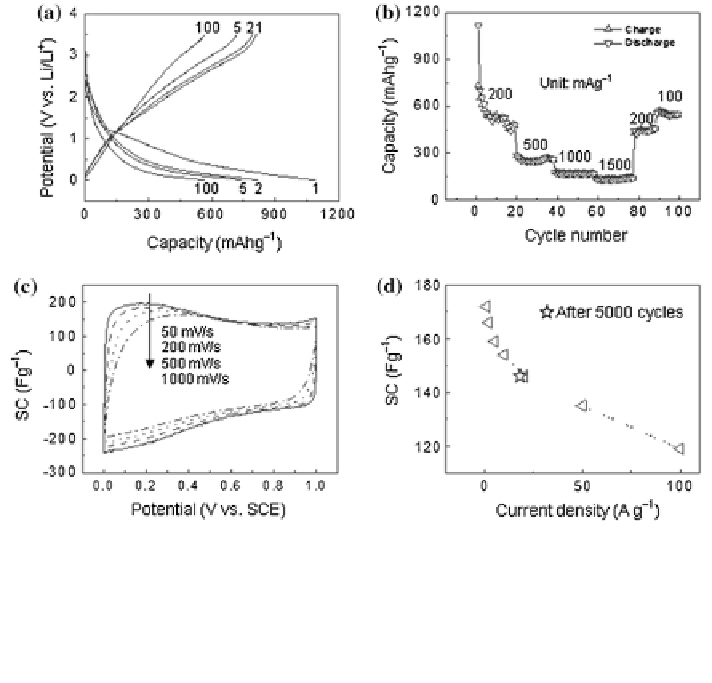Environmental Engineering Reference
In-Depth Information
Fig. 10 Performance test of folded structured graphene paper. a Discharge/charge profiles (1st,
2nd, 5th and 100th cycle) at the current density of 100 mA g
-1
as LIB anode. b Cycling stability
and rate capacity of the graphene paper as LIB anode at different current densities. c CV curves of
the graphene paper as supercapacitor electrode at different scan rates. d Specific capacitance of
the graphene paper as a function of charge/discharge rate
Fig.
9
h show a broad peak centered at 2h = 23.4, with the interlayer spacing
calculated to be 0.38 nm, which is slightly higher than that of graphene paper
obtained by vacuum filtration (0.37 nm). Besides the broad peak, this type
graphene paper is distinguished with two sharp and strong XRD peaks at
2h = 11.8 and 24.3. As shown in Fig.
9
i, these two peaks correspond to the
folding edge of multilayer graphene sheets. The peak at 2h = 24.3 is a result of
more regular d-spacing of graphene layers at the curved edge, and the peak at
2h = 11.8 originates from the uniform spacing of the channel at the folding axis,
which is similar with the intertube space of multi wall CNT (MWCNT).
When test the performance of folded structured graphene paper as anode in LIB,
the first discharge and charge capacities of graphene sheets are 1,091 and
864 mAh g
-1
at the current density of 100 mA g
-1
, reached a Coulombic effi-
ciency of 79.2 % (Fig.
10
a), the discharge and charge capacities are as high as 815
and 806 mAh g
-1
at the second cycle, and high Coulombic efficiencies that all
over 98 % can be obtained in the following cycles. These results indicate that the
reversible capacity of folded structured graphene paper is much higher than that of

Search WWH ::

Custom Search